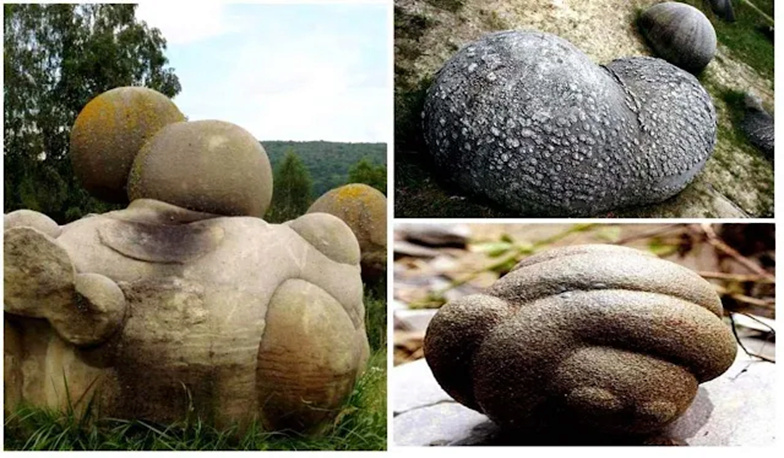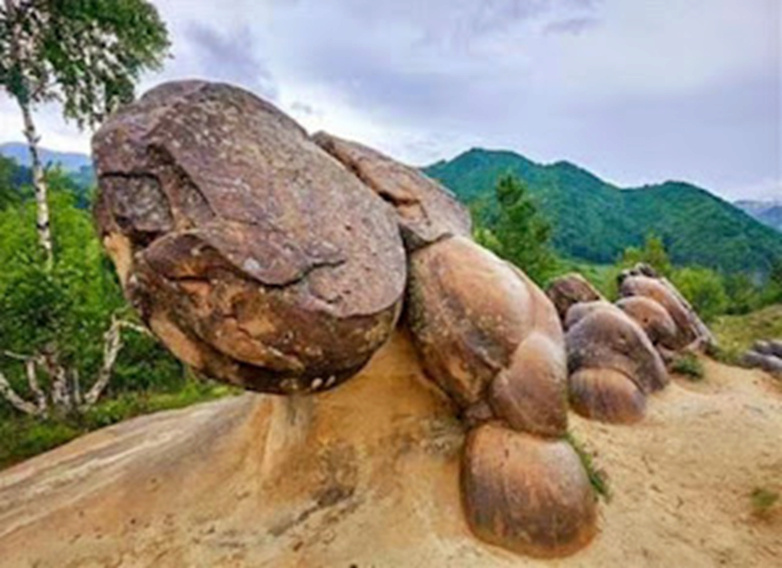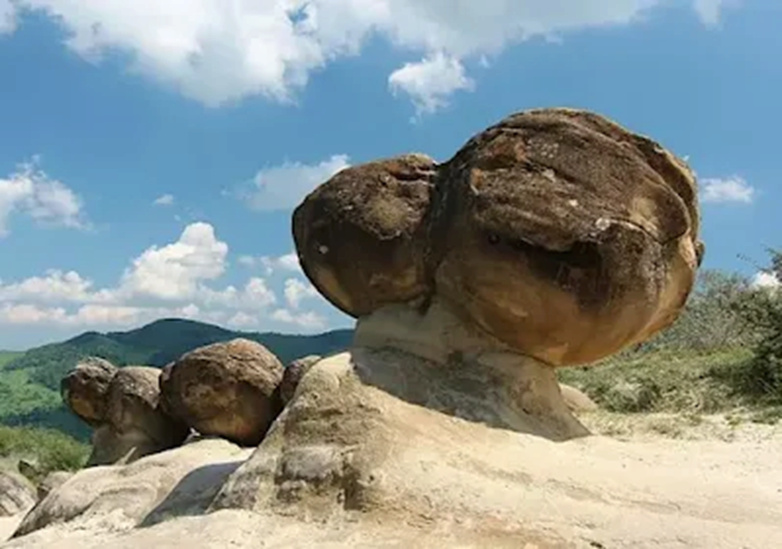Discovering mysterious living rocks capable of growth and movement

Live rock Romania
Revealing the secrets of "living rocks" - mysterious stones capable of growth and movement in Romania!!
There are still many secrets in nature that scientists are confused about, some of which they cannot find an explanation for yet. Therefore, all the time we see many news that reveal to us places in our world that are very special and contain many secrets. A small town in Romania called " Coast City is home to an unusual geological phenomenon known as "Trovantis" where rocks were discovered capable of growing slowly in the presence of rainwater as well as movement!! How is that !! What is this phenomenon?
According to what scientific research has revealed, the history of the existence of these stones goes back approximately six million years, as in their beginning they were small pebbles such as those used in building buildings, but with the passage of time these stones became able to grow, as the length of one stone today has reached 10 Meters on average. There are burrows that are a few centimeters longer and others that are shorter.
Scientists have discovered another set of characteristics in which this strange type of rock is similar to the human race. Scientists have revealed the ability of these strange stones to reproduce and that they breathe like humans, but at intervals that may range from two days to approximately three weeks.

The Trovantes phenomenon varies in shape and size. Some of them can fit in the palm of the hand, while others may reach a height of four and a half meters.
Starting with pebbles, which grow by about 5 cm every thousand years, floating stones are unique mineral structures that mimic plant and mammalian life. These strange living stones appear to grow in the same way as plant tissue and generate new stones just like an animal.
Trophantine stones do not simply appear from the ground, but rather are found in a mass of sand from different geological ages that reach natural outcrops or in sand quarries.
It is noteworthy that the term "Trovants" is synonymous with the German term (Sandsteinkonkretionen), which means "sandy knot or tuber." Dr. Mircea Tiklianu from the Geological Institute in Romania said that the word "trovant" was used for the first time in geological literature from Romania.

Visitors to the Coast City site can walk on a large variety of spherical stones that grow slowly over time in the presence of rainwater. They mainly consist of a solid stone core surrounded by sand that forms its crust. The minerals present in the rainwater form an internal reaction that leads to increased pressure inside. Which makes the rocks grow and reproduce.
In a clearer sense, these stones are a type of concrete or hardened stone (grains or sedimentary sand rocks bound together by limestone cement (calcium carbonate)).
Scientists have found no difference between Trovantis and the surrounding sandy bed, so they suspect that the spherical shapes were formed by unusually intense and long-lasting seismic activity in the middle Miocene 6 million years ago and that shock waves emanating from the ground compressed the sandy deposits and concentrated the lime cement into its blocks. Spherical.
Over time, the elements caused the sandstone around it to erode, exposing the denser rocks, and when exposed to heavy rain, some cement could seep onto its surface, gradually adding to the outer perimeter of the stone over time.

Not much has been written about this process, but it is said that it only occurs in about 4-5 cm over a period of 1,200 years. When cutting the stone, protrusions and rings can be observed, very similar to the rings that form the circumference of trees, each of which represents a specific period of growth.
Although they are not alive in the scientific sense, locals and tourists alike have described them as living stones because of the way they seem to change over time as well as their ability to move from one place to another, which is likely caused by the increased mass of the stone. On one side this leads to a forward tilt.
The real surprise was when the researchers revealed the presence of a strange pulse inside this type of stone found in Romania. The researchers detected it using some highly sensitive equipment, in addition to the ability of these stones to move, which made the city’s residents believe that there were ghosts inside these stones and they also came up with some myths about them. However, scientists explained the phenomenon related to movement, as the matter is due to the increase in the mass of these stones on one side only, which leads to a decrease in this heavy mass at the expense of the other, lighter in weight, which makes it have the ability to move at a rate of 2.5 mm approximately every two weeks.
Coast City is not the only place where Trovantis stones are found. Rather, they are found throughout the Carpathian region in Romania, according to a study co-authored by Dr. Mircea Ticlianu from the Geological Institute of Romania.
However, those at Coast City are well known and have large diameters and are spherical and elliptical in shape but many have double and complex shapes.
Source: websites

